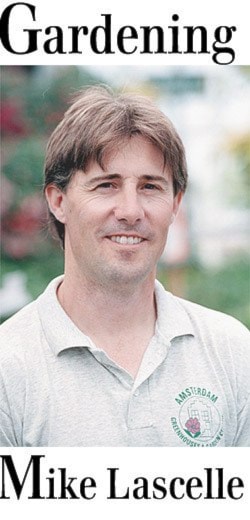I’ll be the first to admit that shade exposures can be a bit of a design challenge, often leading gardeners to throw up their hands in defeat.
Disappointment usually starts with the very limited palette of plants that actually thrive in part to full shade, meaning that many flowering favourites are often left off the table.
Then there are the challenges posed by the very trees causing the shade, whose dense crowns shear valuable rain aside and often greedy root systems lap up what little soil moisture is available – making for very dry conditions without augmented irrigation.
Another problem is the predominance of green, as many burgundy or gold-leaved shrubs require at least partial sun to retain their foliage colour, often shifting to the dreaded green with lower light levels.
Last but not least in the shade garden complaint department is the flurry of spring flowers provided by shade perennials, followed by summer dormancy and a virtual dirge of blooms until the following spring.
So if you are one of those disgruntled shade gardeners, take heart, because beautiful low-light landscapes are well within reach as long as you are willing to lower your expectations a little (you accept the above limitations).
Those large voids in the fence corners are best filled by either Japanese Aralia (Fatsia japonica) or Aucuba japonica – both of which are broadleaf evergreens. The former species much resembles a large tropical plant with its glossy palmate foliage and multiple stems that often grow two to three metres in height. Aucuba japonica is primarily a foliage plant with insignificant flowers and red berries on female plants that receive pollination.
The large simple leaves come in many variegation patterns, including spotted (‘Golden King’, ‘Crotonifolia’) and inset gold blotches, such as ‘Picturata’ – these are easily trained into informal hedges. Speaking of which, a shade exposure is no place to use emerald cedars for hedging – instead, try columnar forms of yew, including Taxus x media ‘Hicksii’ or ‘Hillii’.
Getting back to shrubbery, Skimmia japonica occupies the next level down, averaging a meter high and wide for most cultivars. These evergreen shrubs have a dense, dome-shaped growth habit and come in both male and female clones. The red-budded males (‘Rubella’, ‘Rubinetta’) are the most popular, closely followed by the self-fertile female reevesiana. Christmas Box (Sarcococca) brings much-needed winter fragrance to the shade garden, with Sarcococca humilis forming a dense evergreen groundcover (at about 45 centimetres high) and the taller arching stems of Sarcococca ruscifolia (1-1.5m high) scenting the air with its tiny white flowers.
Vines pose one of the biggest challenges for low-light exposures, but for partial shade I would highly recommend climbing hydrangea (particularly the gold variegated cultivar called ‘Miranda’) and the closely related Schizophragma, with ‘Moonlight’ (pewter foliage highlights) being the best of these. An evergreen vine option would be Variegated Persian Ivy (Hedera colchica ‘Dentata Variegata’) which has larger leaves and is much less invasive than the much-hated English Ivy.
When it comes to perennials I would look to the hardy cyclamen – with C. coum and C. hederifolium being the most readily available. Cyclamen coum is in bloom soon and features white to deep rose flowers that sit above rounded leaves with varying silver variegation patterns, many of which are attractive in their own right. The fall-blooming Cyclamen hederifolium has ivy-shaped foliage (also with beautiful variegation patterns) and white to pink blooms – both of these may go summer dormant when dry.
Mike Lascelle is a local nursery
manager and gardening author
• There are many shade tolerant options out there, so for some more ideas you can visit my plant selection website at www.mikesgardentop5plants.wordpress.com.
